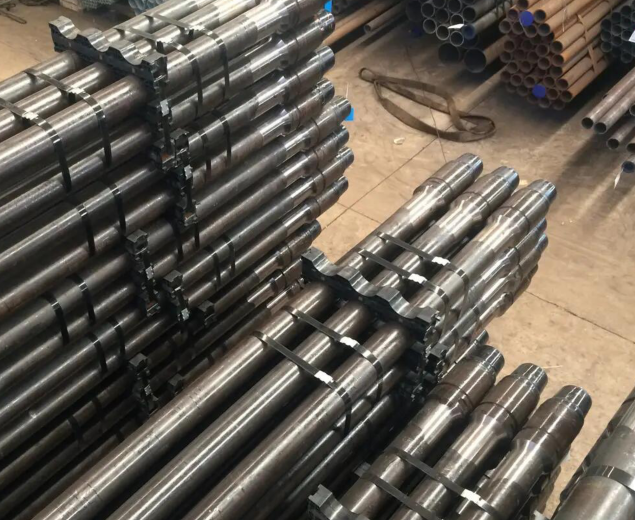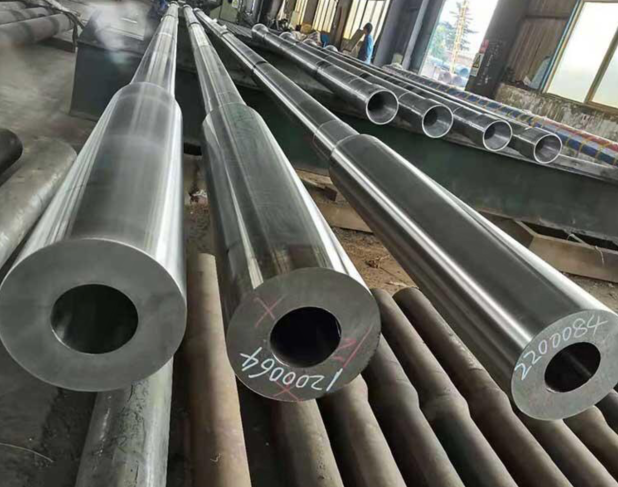
Difference between Drill Pipe and Drill Collar
Drill pipe:
Drill pipe is a long, hollow steel pipe used to rotate the drill bit and circulate drilling fluid in the well. It is usually made of alloy steel and has a threaded connection at each end, called a tool joint, that allows it to be screwed together with other drill pipe sections or other drill pipe components such as drill collars. Drill pipe plays the role of transporting drill bits and mud during drilling.

Drill collars are thick-walled, heavy, short sections of drill pipe added to the bottom of the drill string to provide weight on the drill bit. It is usually made of high-strength steel, such as alloy steel or tungsten carbide. Drill collars are used to help keep the drill string straight and provide a method of transferring drilling torque to the drill bit. Drill collars are elongated drilling tools that can accurately collect cores in key formations and help geologists evaluate reservoir properties.
The drill collar is located at the lower part of the drill string and is the main component of the lower drill tool assembly. Its main features are large wall thickness (generally 38-53mm, equivalent to 4-6 times the wall thickness of the drill pipe), and large gravity and rigidity. Drill collars are generally divided into three types: spiral drill collars, non-magnetic drill collars, and solid drill collars. The lower part of the drill collar is connected to the drill bit, and the upper part is connected to the drill pipe. Functionality is similar. Drill pipe mainly transmits motion and power. The drill collar is stronger than the drill pipe and directly drives the drill bit.

The difference between drill pipe and drill collar:
1. Different materials
Drill pipe is usually made of high-quality alloy steel, which has good strength and hardness and can withstand high pressure and heavy load. Drill pipe has to withstand extremely high tension, torsion force and impact force during the drilling process, so the material quality requirements are very high.
Drill collars are usually made of high-speed steel or tungsten steel, which have high hardness and good wear resistance. They can penetrate rocks and cut samples to collect geological information. This material is much less hard and strong and is not suitable for high pressure and heavy load use.
2. Different shapes
Drill collars are thicker than drill pipes and weigh more per unit length. The shape of the drill pipe is usually cylindrical and longer than the drill collar because it needs to withstand greater heavy loads and pressures. The drill collar is tapered and its diameter gradually becomes smaller, which can better adapt to the cliffs of underground rocks and achieve better penetration. Because the diameter of the drill collar is smaller, its resistance is smaller than that of the drill pipe, allowing better control of the drilling depth and reverse circulation flow.
3. Different uses
Drill pipe is mainly used for deep hole drilling, and is also used for installing underground communication cables and water pipes, as well as for driving and filling of drill rods. Drill collars are usually used for shallow hole drilling, such as foundation inspection, anchoring and blasting operations.
Drill collars can directional drill holes, and because of their low resistance, they can be used to replace drill pipes for technical drilling, such as soil and water quality testing and environmental geological surveys.
4. Different ways of use
Drill pipe: When using drill pipe, personnel need to control the direction and position of the drill pipe through certain technical means to ensure that the drill bit is drilling accurately and to ensure the safety and successful completion of drilling.
Drill collar: When using the drill collar, personnel place it in the well and ensure that the position and direction are accurate. By controlling parameters such as downward speed and drilling direction, the safety, stability and successful coring of the drill collar are ensured.
Conclusion
Drill pipes and drill collars have obvious differences in appearance, material, purpose and usage. They are all indispensable tools in oil drilling, but the appropriate tool needs to be selected based on the specific situation and needs.
Go here to learn more about " Drill Pipe vs Oil Casing Pipe"


